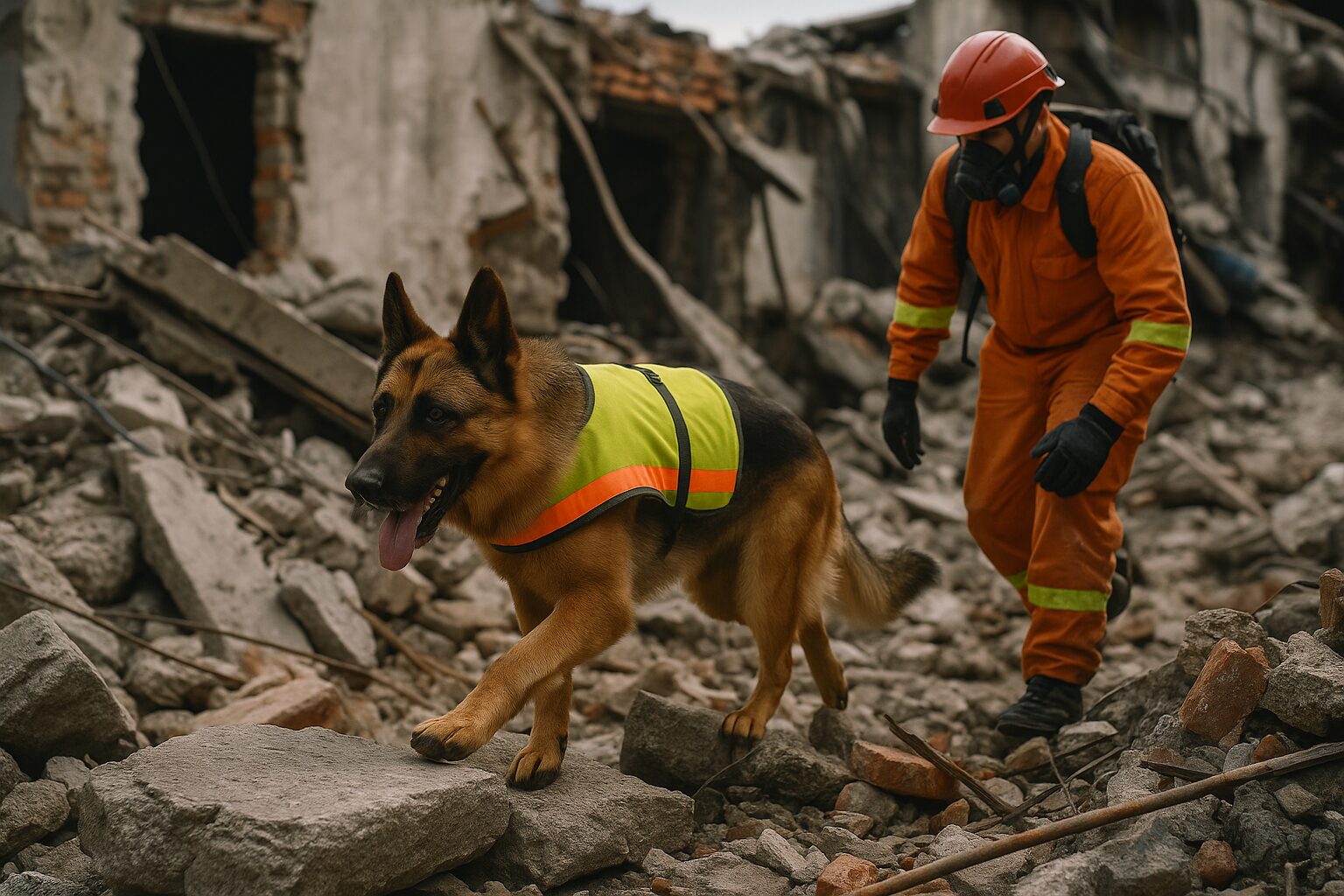Throughout history, dogs served humanity not only as companions but also as courageous rescuers in times of extreme crisis. From avalanches in the Alps to the rubble of earthquakes and terrorist attacks, rescue dogs played vital roles in saving lives and providing emotional support amid tragedy.
The first heroes: Saint Bernards in the Alps
As early as the 17th century, Saint Bernards were used by monks at the Great St. Bernard Hospice in the Swiss Alps to find and save lost travelers in snowstorms. One legendary dog, Barry, is credited with saving over 40 lives. His story inspired generations of search-and-rescue training programs.
World War I and II: dogs on the battlefield
During both World Wars, dogs were used to deliver messages, detect mines, and locate wounded soldiers. In WWI, the Red Cross trained dogs to find injured men on battlefields. Many accounts describe dogs refusing to leave wounded soldiers until help arrived.
9/11: canine courage among the ruins
One of the most moving modern examples was the work of dogs after the September 11 attacks in New York. Over 300 trained rescue dogs worked tirelessly alongside firefighters and emergency teams.
Notable stories include:
- Salty and Roselle, two guide dogs who led their blind owners down more than 70 flights of stairs in the North Tower before it collapsed.
- Apollo, a German Shepherd with the NYPD K-9 Unit, became the first search-and-rescue dog on the scene. He was later honored with the Dickin Medal, the highest animal bravery award.
Earthquakes and natural disasters
Rescue dogs have proven essential in natural disasters:
- Haiti Earthquake (2010): Teams from the U.S., France, and other countries deployed over 70 search dogs, locating survivors trapped beneath rubble for days.
- Mexico Earthquake (2017): A Labrador named Frida, from the Mexican Navy, became an international symbol of hope after helping rescue over a dozen people.
- Turkey-Syria Earthquake (2023): Dozens of dogs from around the world assisted rescue missions, often finding victims unreachable by machines.
How rescue dogs are trained
Training begins early, focusing on:
- Scent detection: to locate human scent in rubble.
- Agility: to move through unstable surfaces.
- Obedience and focus: to remain calm in chaotic environments.
Breeds like German Shepherds, Belgian Malinois, and Labradors are commonly used. However, any dog with drive, agility, and discipline can be trained. Most training programs last 12–18 months and include simulations of real disaster zones.
Beyond search and rescue: therapy and comfort
Dogs also serve as emotional support agents in the aftermath of trauma:
- After the Boston Marathon bombing, therapy dogs were brought to hospitals and memorial sites.
- In schools affected by natural disasters, dogs help children cope with fear and loss.
These therapy dogs don’t search for survivors, but their impact is just as crucial for emotional healing.
Honoring their service
Many organizations have created tributes:
- The National Disaster Search Dog Foundation trains and pairs dogs with first responders.
- Statues of dogs like Frida and Barry celebrate their legacy.
- Some countries offer military honors and medals for canine bravery.
In 2019, the UK’s first memorial for service animals was unveiled in London, featuring dogs, horses, and pigeons who served in war and disaster zones.
More than rescuers: symbols of loyalty and hope
What makes these stories unforgettable isn’t just the number of lives saved — it’s the way dogs act with instinctive courage and unwavering loyalty. In the darkest moments, they bring not only help, but hope.
Whether navigating collapsed buildings, guiding the blind through chaos, or simply lying next to a grieving child, rescue dogs remain among humanity’s most noble allies.

